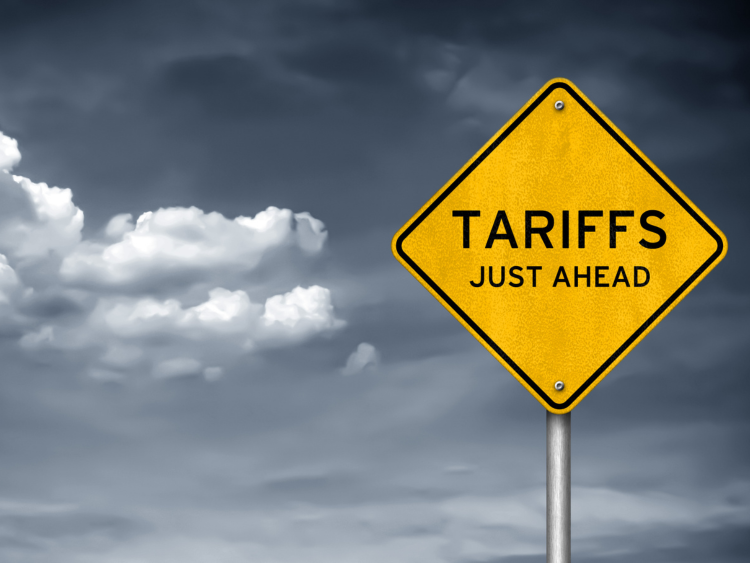Government/Policy
Leibowitz: The US-EU Steel, Aluminum, Climate, and Geopolitics Dance
Written by Lewis Leibowitz
October 17, 2023
The US and EU have apparently decided to move part way to a deal on steel and aluminum that will prevent a resumption of Section 232 tariffs.
The scheduled US-EU summit this week should include an announcement of at least a partial deal. This partial deal was made more essential because of events unfolding in the Middle East.
A recent opinion column in the Wall Street Journal described the global power structure thus: there are four Great Powers in the world. They are the United States, Russia, China, and the European Union. Russia and China are striving to change the world order (with help from Iran and others), while the US and EU are striving to preserve it.
This is not the only possible way to make sense of the world order. But it helps explain the moves that major players are making right now.
To paraphrase Sesame Street, one of these Great Powers is not like the others: the European Union’s clout is based on economic strength and “soft power,” rather than military strength. As Russia and China are trying to use miliary strength to change the world order, the “soft power” of the EU is looking like it isn’t quite up to the task.
How to make Europe’s position stronger? Get closer to the United States.
That helps explain the upcoming US-EU meeting in Washington (scheduled for Oct. 20) as a vehicle for demonstrating a new unity. Most of the movement has come from the EU.
Just last week, a report was leaked to both mainstream and trade publications describing the structure of a US-EU agreement on steel and aluminum. There are large areas of disagreement remaining—so an interim deal to postpone any thought of reinstating the US Section 232 tariffs harvests some low-hanging fruit.
First, the EU will launch an investigation of “non-market” subsidies on steel and aluminum exported to the EU. The investigation will surely include China, but it may hit other exporters as well, according to news reports quoting the head of Eurofer, the European steel association.
These investigations serve US interests too. They join Europe with the US on limiting dependence on China and give support to labor interests in both markets. The goal of the EU investigations, according to the leaked report, is 25% tariffs on steel and 10% on aluminum. Sounds familiar, eh? In exchange, the US will not reimpose Section 232 tariffs on the EU (and presumably not on the UK either).
Early this month, the EU announced a third subsidy investigation on Chinese exports of electric vehicles to the EU. The goal is the same—to discipline Chinese export practices.
The US and EU apparently will defer resolution of the “green steel” elements of the negotiations. The two sides are at loggerheads over the EU carbon border adjustment mechanism, or CBAM, because it would tax US exports to Europe. And Europe is opposed to the US approach of imposing tariffs on steel that is dirtier than the average of BOF and EAF production in the US.
The EU insists that it will conduct investigations before taking any trade-restrictive action. This permits the EU to say that it is following WTO procedures. But, for now, the WTO procedures remain broken because of the neutering of the dispute settlement system. The EU is willing to defend WTO principles, if only rhetorically. The US does the same—but continues to block any progress on resuscitating the dispute settlement system.
In the meantime, events on the ground, in Ukraine and the Middle East, suggest that the WTO (and perhaps even action on the climate) is among the lesser of the world’s worries at the moment. The EU’s “soft power” Great Power status is weakened by the spread of armed conflict. Things are likely to get worse before they get better.

Lewis Leibowitz
Read more from Lewis LeibowitzLatest in Government/Policy

Price on Trade: The foolishness of free trade with controlled economies
It was only a matter of time before a shutdown happened. And, no, we aren’t talking about the federal government’s lapse in appropriations. On Oct. 9, Beijing announced a series of restrictions that will effectively shut down exports of rare earth elements, magnets, and certain downstream products vital to advanced manufacturing.

Trump pulls plug on trade talks with Canada after anti-tariff Reagan ad
US President Donald Trump took to social media late Thursday night to announce he was canceling trade talks with Canada.

Leibowitz: Renewed trade war with China over rare earths
On Oct.10, President Trump announced major increases in tariffs on Chinese goods. The trigger was a new regime of export controls on rare earth metals and products using those elements, including magnets, capital equipment, and catalysts for catalytic converters in cars and trucks.

Industry piles on new Section 232 steel derivative inclusion requests
The Department of Commerce received 97 submissions from producers, manufacturers, and groups seeking Section 232 tariff coverage for steel and aluminum derivative products.

Price on Trade: New EU steel tariffs don’t mean the US should weaken its stance
Any steel imports into the EU that exceed the new, lower quota level would be subject to a 50% tariff, which represents a major increase from the EU’s current 25% out-of-quota tariff. This move would largely align the EU’s steel tariff rate with Canada and the United States.
